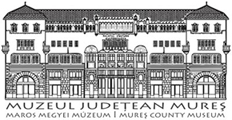Marisia - Maros Megyei Múzeum Évkönyve 32/2. (2012)
Articles
8 M.-M. Ciutä Dug in the loess soil specific for the middle Mures valley, the irregular-shaped, slightly elongated pit house with successive fillings, uneven floor with several hollows and with entrance probably on the north-western side appeared in the central area of the trench (PL 1/2-3), outlined at a depth of 40-45 cm, with a maximum length of 220 cm on the southeast-northwest axis. The feature was only partially excavated, because the northern and southern edges had fallen under the profile of the trench, but probably the pit house was 280 x 200 cm in dimensions, with an average depth of 150 cm. At a distance of 10-20 cm, west to the pit house a shallow pit (Gl/1995)- possible annex of the larger dwelling - was investigated. East to Bl/1995, at approximately 150 cm a large and deep clay pit (G2/1995) was identified, which exceeded on three sides the margins of SI/1995. The inventory of the pit house included pottery, animal bones, stone tools, adobe and carbonized wooden fragments. Beginning at 10-15 cm from the floor of the feature a consistent layer of ashes with carbonized wood and adobe were observed (PI. 1/3), suggesting that the dwelling burned and afterwards it was abandoned. The particular character of some artefacts found in the - otherwise relatively poor - feature raises questions about the functionality of the entire complex. Together with dotted pottery, incised cups and ‘blacktopped’ fragments several exceptional artefacts appeared. Showing traces of recent breaking, the prosopomorph protoma (Pi. 2/1) found in the burnt layer from the central area of the pit house refers to an advanced aesthetic and artistic execution. The brownish-grey artefact representing a realistic human head is made of good quality clay and it has a chalky slip. The fragmentary piece - the bottom and the backside is broken - is 7 cm wide and 6.5 cm high and 1.5-2 cm thick. The colour of the section is black, the clay was tempered with sand, other non-organic components are lacking, the firing was reducing and the surface is smoothed, covered with uneven brown slip. Covered by mineral deposits in the moment of discovery, it does not present any traces of fixation, therefore it was probably not detached from the wall of other artefact or vessel. The human representation is slightly exaggerated in size, with a straight, hairless forehead. The realistic - and slightly damaged - nose represents even the nostrils by two vertical incisions. Starting from the root of the nose, the eyebrows are represented in the form of two arched, elegant, symmetrical semicircles. The eyes were realized in the form of horizontal elongated impressions, the small central round holes portraying the iris and pupil. Only the right ear with an orifice is kept, the similarly perforated left one was broken in ancient times. On the top of the head, on the right side three parallel incisions can be observed, these are probably not stylistic or ornamental motifs, but rather functional elements related to the fixation of the piece. Probably such incisions were also visible on the lower left side, now broken. The anthropomorphic protoma- rather than figurine or statuette, which would presume three dimensional artistic representations - can be considered an artefact of superior aesthetic value, showing great skills, experience and knowledge of tradition of the craftsman. The artefact presents similarities in the execution of the human facial parts (the eyes, eyebrows and nose) with another piece discovered in the 1940’s (Berciu-Berciu 1949, pl. I; fig. 3/9). Similar anthropomorphic representations are known from the Zsófia Torma collection (Roska 1941, Taf. CXXXIX/14), however its illustration lacks the profile drawing, therefore it cannot be distinguished if the representation is a protoma or a statuette. Another clay object published by Roska (1941, Taf. CXXXIX/9) most probably portrays a protoma representing a
